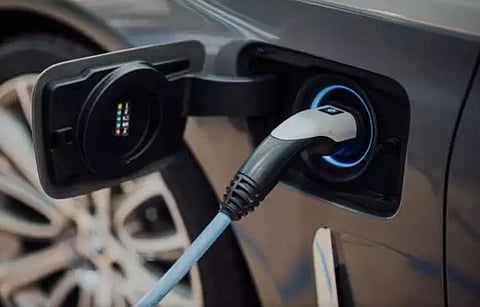

Green number plates are now becoming a common sight in most Indian cities. Tesla is planning its entry into the country, and the government is considering a Rs 50,000 crore outlay for Faster Adoption and Manufacturing of (Hybrid and) Electric Vehicles in India (FAME) III.
In FY 2023, nearly 10 lakh EVs were registered nationwide, a jump of 2.5 times from FY2022. More than 20 states have launched their EV policies, providing fiscal and non-fiscal incentives for manufacturing and purchasing. For India to drive its EV journey, it must both weigh the pros and cons of the EV transition.
A 2020 Council on Energy, Environment, and Water (CEEW) study found that the transport sector’s tail-pipe emissions across India amount to 272 million tonnes of carbon dioxide. Exhaust-free EVs are greener and can improve our collective health by addressing air pollution from this sector in the long run. Further, India could reduce its PM and NOx by 17 percent by achieving its ambitious EV30@30 target (adding 30 percent EVs to its new vehicle sales by 2030, which is currently at 5 percent).
Finally, as India’s energy bill rises and geopolitics disrupts supply chains, EV30@30 has the potential to reduce the nation’s crude oil import bill of about Rs 7.5 lakh crore by 15 percent, resulting in saving valuable forex. The plan could also bring in an estimated Rs 2.1 lakh crore in value-add through battery, powertrain and charger manufacturing for EVs. India has seen a 246 percent growth in electric vehicle exports in the first seven months of FY2024.
The road to the EV transition, however, is riddled with challenges. While India diversifies its energy markets by promoting EVs, the Union and state governments could have an estimated loss of Rs 1.1 lakh crore in revenue from reduced petrol and diesel sales. To balance this, the government should implement alternate taxes, such as distance-based taxation, which can counter revenue loss and promote public transit. The maximum environmental impact is when EVs are coupled with enhanced public transport. It can significantly improve energy consumption, air quality, congestion, and road safety.
Finally, the EV transition faces perceived manufacturing job loss and hesitation in adopting new technologies. Our analysis shows that the overall manufacturing-related direct job loss can be averted as more jobs get added in EV battery and charger manufacturing. To realize the vision of the ‘Aatmanirbhar Bharat’ and boost markets, the government is augmenting indigenization in battery manufacturing and recycling through the production-linked incentives (PLI) scheme. However, to further strengthen these schemes, they must move towards deployment targets and procurement specifications or standards.
A large awareness campaign is needed to combat behavior biases for not choosing EVs – risk-averse attitude, the perceived sunk-cost fallacy of current vehicles, and passengers overvaluing their rare long-distance trips.
For India, the opportunities outweigh the challenges of adopting EVs en masse. Backed by the economics of low running costs and environmental benefits, EVs have aced the test of natural selection among commercial vehicle segments. But to maximize the benefits of the EV-led tech transition, the government must consider policy reforms in taxation, promotion of public transit, and procurement standardization and specifications. This can ensure that having pizza delivered while stuck in a Bengaluru traffic jam is a thing of the past.
Krishna Khanna is a research analyst and Himani Jain is a Senior Programme Lead at the CEEW
Krishna Khanna & Dr Himani Jain